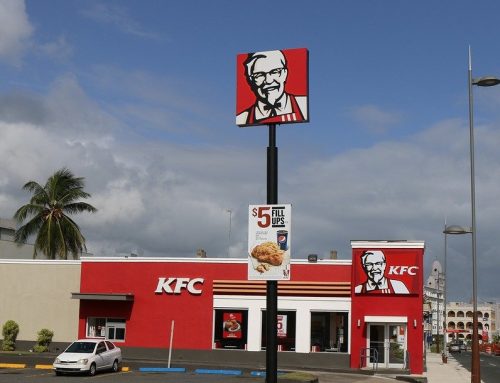Einsteigerguide: Was ist Rigging?
Wenn ein Modellierer einen Charakter fertig baut, wirkt das Modell wie eine Marmorskulptur. Bevor ein 3D-Charaktermodell an die Animatoren weitergegeben werden kann, muss es an ein System von Gelenken und Kontrollgriffen gebunden werden, damit die Animatoren das Modell positionieren können. Dieser Prozess wird in der Regel von Künstlern, die als Character Technical Directors (TDs) oder Rigger bekannt sind, durchgeführt.
TDs arbeiten eng mit Animatoren zusammen, um sicherzustellen, dass alle spezifischen technischen Fragen berücksichtigt werden. Ihre Hauptaufgabe besteht darin ein statisches 3D-Mesh zu nehmen und es für die Animation vorzubereiten – ein Prozess, der als Rigging bezeichnet wird.
Rigging.
Ein Character Rigg ist im Wesentlichen ein digitales Skelett, das an das 3D Mesh gebunden ist. Wie ein echtes Skelett besteht ein Rigg aus Gelenken und Knochen, von denen jedes als Griff fungiert. Auf diese Weise können Animatoren den Charakter in die gewünschte Position bringen.
Ein Charakter-Rigg kann von schlicht und elegant bis hin zu verblüffend komplex sein. Ein einfaches Setup für einfache Posen kann in wenigen Stunden aufgebaut werden, während ein vollständig artikuliertes Rigg für einen Spielfilm Tage oder Wochen benötigen kann, bevor der Charakter für Pixar-Animationen bereit ist.
Einsetzen des Skeletts.
Die Skelettplatzierung ist vielleicht der einfachste Teil des Rigging-Prozesses.
Die Gelenke sollten in den meisten Fällen genau dort platziert werden, wo sie sich in einem echten Skelett befinden, mit einer oder zwei Ausnahmen.
Gemeinsame Hierarchie: Damit ein Rigg richtig funktioniert, müssen die Knochen und Gelenke einer logischen Hierarchie folgen. Beim Einrichten des Skeletts eines Charakters wird das erste Gelenk, welches platziert wird, als Wurzelgelenk bezeichnet. Jedes nachfolgende Gelenk wird entweder direkt oder indirekt über ein anderes Gelenk mit der Wurzel verbunden.
Forward Kinematics: Forward Kinematics ist eine von zwei grundlegenden Methoden, um die Gelenkbewegung eines vollständig aufgetakelten Charakters zu berechnen. Bei der Verwendung von Forward Kinematics-Abspannungen kann eine gegebene Verbindung nur Teile des Skeletts betreffen, die in der Verbindungshierarchie darunterliegen.
So beeinflusst z.B. die Drehung der Schulter eines Charakters die Position von Ellenbogen, Handgelenk und Hand. Bei der Animation mit Forward Kinematics muss der Künstler typischerweise die Rotation und Position jedes Gelenks individuell einstellen, um eine gewünschte Position zu erreichen. Dazu muss der Animator die Gelenkhierarchie sequentiell durcharbeiten. Die Endlage eines Endgelenkes wird als Funktion der Gelenkwinkel jedes darüber liegenden Gelenks in der Hierarchie berechnet.
Inverse Kinematics.
Inverse Kinematics ist der umgekehrte Prozess von der Forward Kinematics und wird oft als effiziente Lösung für das Rigging von Armen und Beinen eines Charakters verwendet. Bei einem Inverse-Kinematics-Rigg wird das Abschlussgelenk direkt vom Animator platziert, während die darüber liegenden Gelenke in der Hierarchie automatisch von der Software interpoliert werden.
Inverse Kinematics ist am besten geeignet, wenn die Animation eine Endverbindung erfordert, die sehr genau platziert werden muss. Ein gutes Beispiel ist ein Charakter, welcher auf eine Leiter klettern muss.
Da die Hände und Füße eines Charakters direkt auf die Leitersprossen gelegt werden können, anstatt dass der Animator seine Position gelenkig verstellen muss, würde ein Inverse Kinematics Rigg den Animationsprozess wesentlich effizienter machen. Ein Nachteil ist, dass das Inverse Kinematics Software-Interpolation verwendet. D.h. dass viel Bereinigungsarbeit bewerkstelligt werden muss, um die Aufnahme fertigzustellen.
Freiheitsgrade und Beschränkungen.
Beachten Sie beim Rigging, dass Gelenke wie Ellenbogen in der realen Welt auf einen einzigen Freiheitsgrad begrenzt sind, d.h. sie können sich nur entlang einer Achse biegen. Ebenso kann ein menschlicher Hals nicht um 360 Grad gedreht werden.
Um unrealistische Animationen zu vermeiden, empfiehlt es sich, beim Aufbau des Riggs gemeinsame Beschränkungen einzurichten.
Squash und Stretch.
Weitere Überlegungen, die man machen muss, betreffen den Umstand ob das Rigg Squash und Stretching unterstützt oder ob der Charakter auf realistische Bewegungen beschränkt ist. Squash und Stretching ist ein wichtiges Prinzip in Zeichentrickfilmen, sieht aber in realistischen Film- oder VFX-Arbeiten üblicherweise nicht richtig aus. Wenn das Rigg realistische Proportionen beibehalten soll, müssen Einschränkungen gesetzt werden, um die Position jedes Gelenks im Verhältnis zum Rest des Riggs zu fixieren.
Facial Rigging.
Das Facial Rigging eines Charakters ist in aller Regel völlig getrennt von den Hauptsteuerungen. Es ist ineffizient und unglaublich schwierig ein zufriedenstellendes Facial Rig mit einer traditionellen Gelenk-/Knochenstruktur zu erstellen, so dass Morph Targets in der Regel als eine effektivere Lösung angesehen werden.


